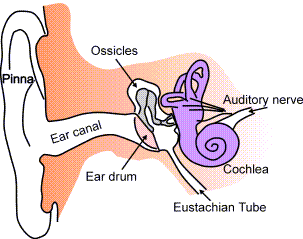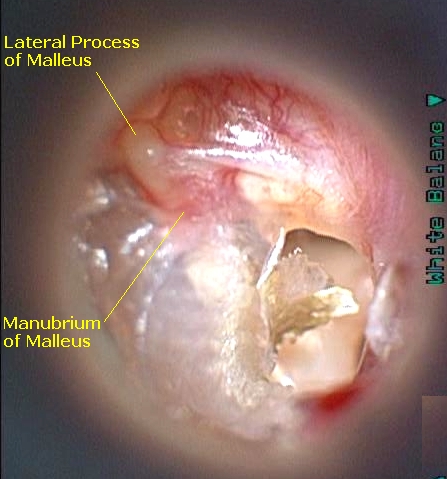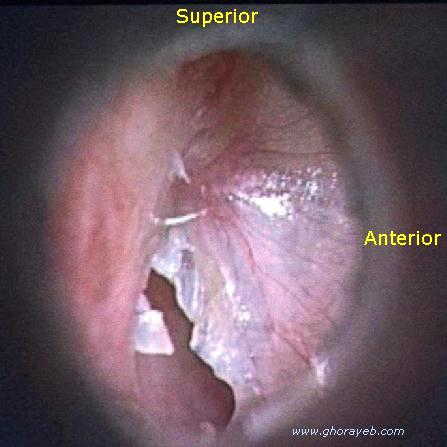Perforated eardrum
| Perforated eardrum | ||
 | ||
|---|---|---|
| ICD-10 | H72 | |
| ICD-9 | 384.2 | |
| DiseasesDB | 13473 | |
| eMedicine | ent/206 | |
| MeSH | C09.218.903 | |
Editor-In-Chief: C. Michael Gibson, M.S., M.D. [1]
Please Take Over This Page and Apply to be Editor-In-Chief for this topic: There can be one or more than one Editor-In-Chief. You may also apply to be an Associate Editor-In-Chief of one of the subtopics below. Please mail us [2] to indicate your interest in serving either as an Editor-In-Chief of the entire topic or as an Associate Editor-In-Chief for a subtopic. Please be sure to attach your CV and or biographical sketch.
Overview
Rupture or perforation (hole) of the eardrum can occur in infection, trauma (e.g. by trying to clean the ear with sharp instruments), explosion or loud noise. Flying with a severe cold can also cause perforation due to changes in air pressure and blocked eustachian tubes resulting from the cold. This is especially true on landing.[3]
Perforation of the eardrum leads to conductive hearing loss.
The perforation may heal in a few weeks, or up to a few months.[4] Some perforations require intervention - this may use a paper patch to promote healing (simple procedure in the office of an ear, nose and throat specialist), or surgery (tympanoplasty).[5][6]
Hearing is usually recovered fully, but chronic infection over a long period may lead to permanent hearing loss.
Diagnosis
Physical Examination
Ear Nose and Throat
 |
 |
 |
References
External links
- Template:MerckHome
- PERFORATIONS AND HEARING LOSS - Ear Surgery Information Center
- Ruptured eardrum - MayoClinic.com
- Perforated Eardrum - InteliHealth
- Should a Person With an Ear Infection, Sinusitis or a Cold Fly in an Airplane?- Purple Medical Blog
- Perforated Eardrum article on NHS Direct